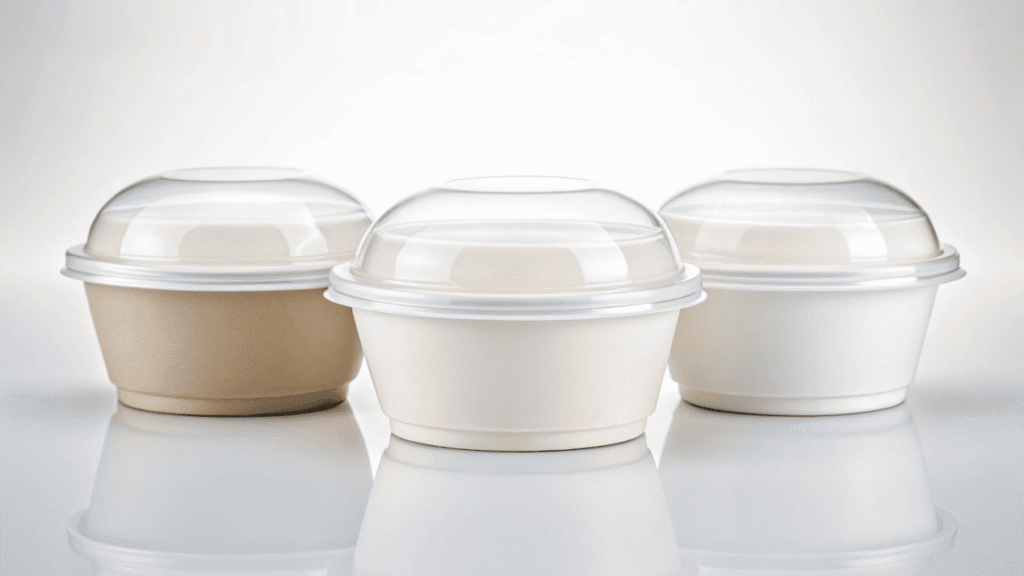A lid is the final touch that protects your food, prevents spills, and completes your customer’s experience. Choosing the wrong one can damage your product and your brand.
Select your lid based on material properties, intended use, and fit—balancing clarity, cost, temperature resistance, and sustainability for the best customer result.
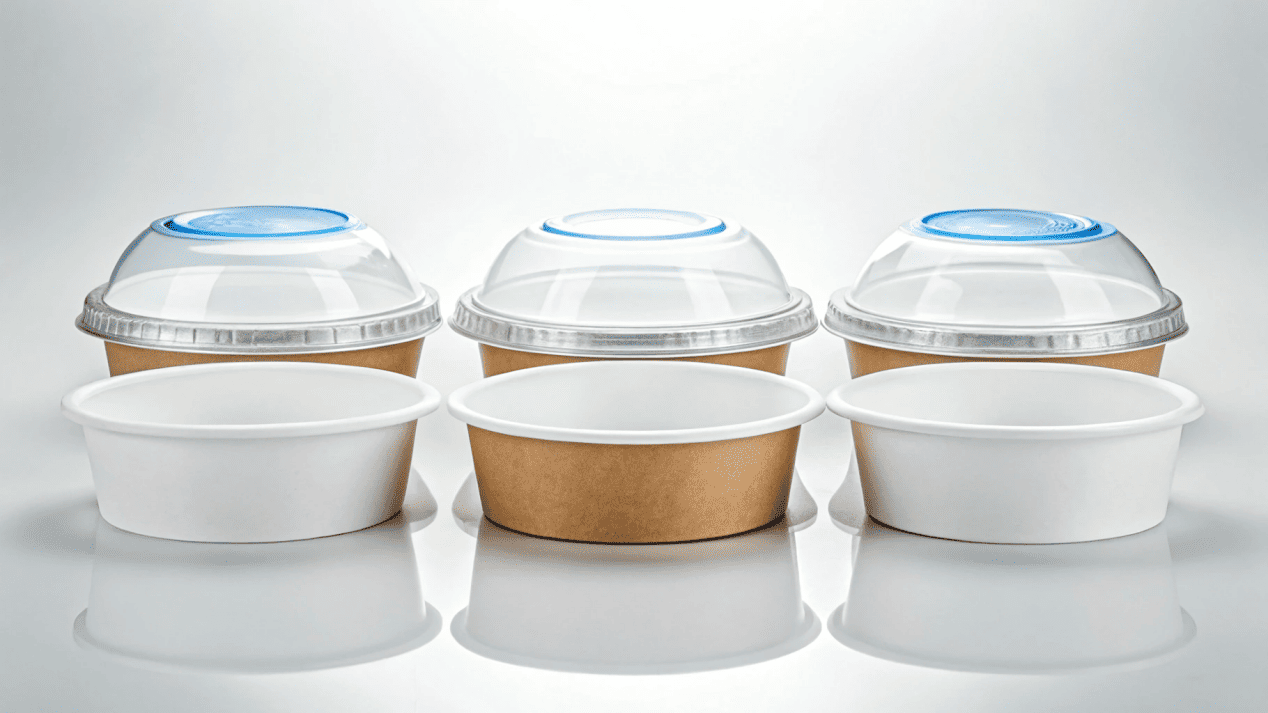
In over 21 years of packaging work, I have seen that a well-chosen lid can elevate a meal, while a poorly chosen one can undo hours of preparation. Your lid must match your bowl in both function and appearance, and the fit must be exact. That’s why I treat lids as a critical design decision, not an afterthought.
What Materials Are Best for Different Lid Purposes?
The lid material decides the durability, heat tolerance, clarity, and environmental impact.
PP works well for hot foods, PET for clear cold packaging, CPLA for eco-friendly hot packaging, and paper lids for plastic-free solutions.
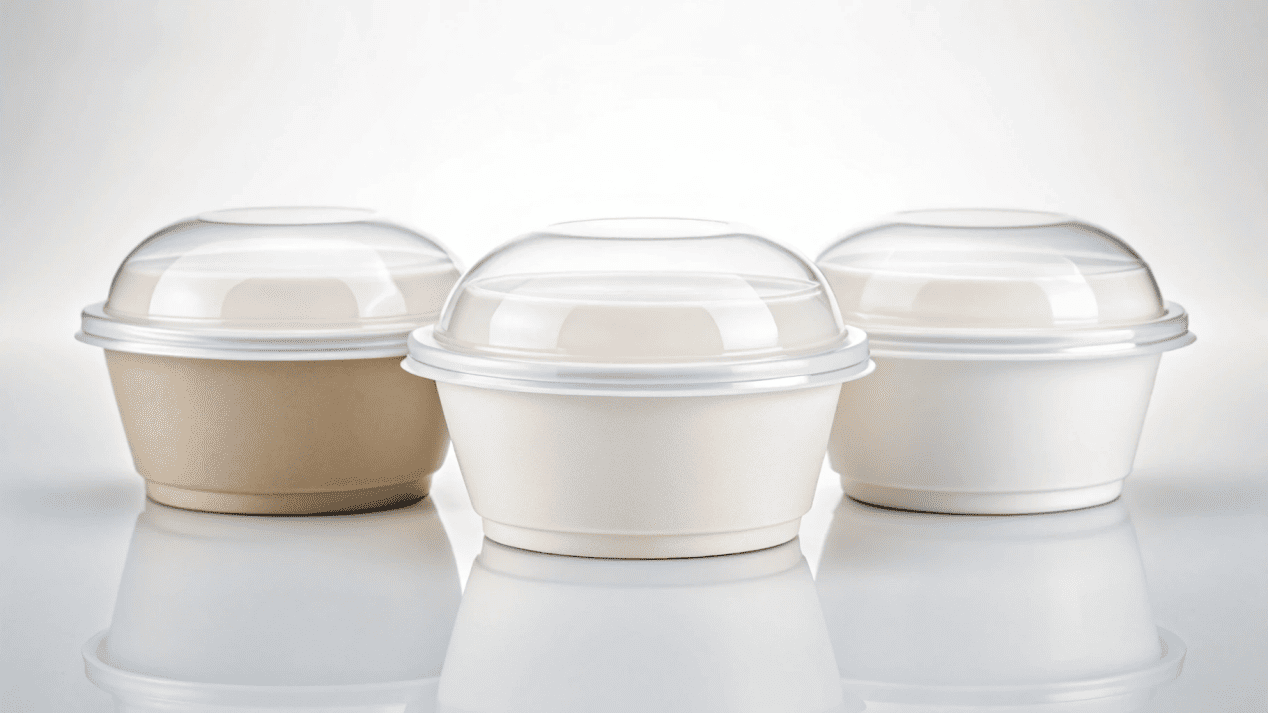
When clients visit our factory and handle different lid samples, they see how each material feels and performs. Often a clear PET dome lid will wow them for desserts, but for a steaming soup, PP or CPLA is the clear winner.
Lid Material Guide
| Material | Best For | Properties | Sustainability |
|---|---|---|---|
| PP (Polypropylene) | Hot foods/liquids | High heat tolerance, durable, microwave-safe, translucent. | Widely recyclable. |
| PET (Polyethylene Terephthalate) | Cold foods/drinks | Superior clarity, strong, crack-resistant, low heat tolerance. | Most recycled plastic globally. |
| CPLA (Crystallized PLA) | Hot foods, eco option | Plant-based, compostable, high heat tolerance, opaque. | Fully compostable in industrial settings. |
| Paper Lids | Any food, no plastic | High-quality paperboard, vent holes, premium look. | Recyclable, compostable. |
Each choice balances cost, function, and sustainability goals.
What Lid Designs Offer the Best Functionality?
The shape and features of a lid decide how well it performs for its intended purpose.
Use vented lids for hot foods, sip-through lids for drinks, dome lids for tall toppings, and flat lids for stackable cold items.
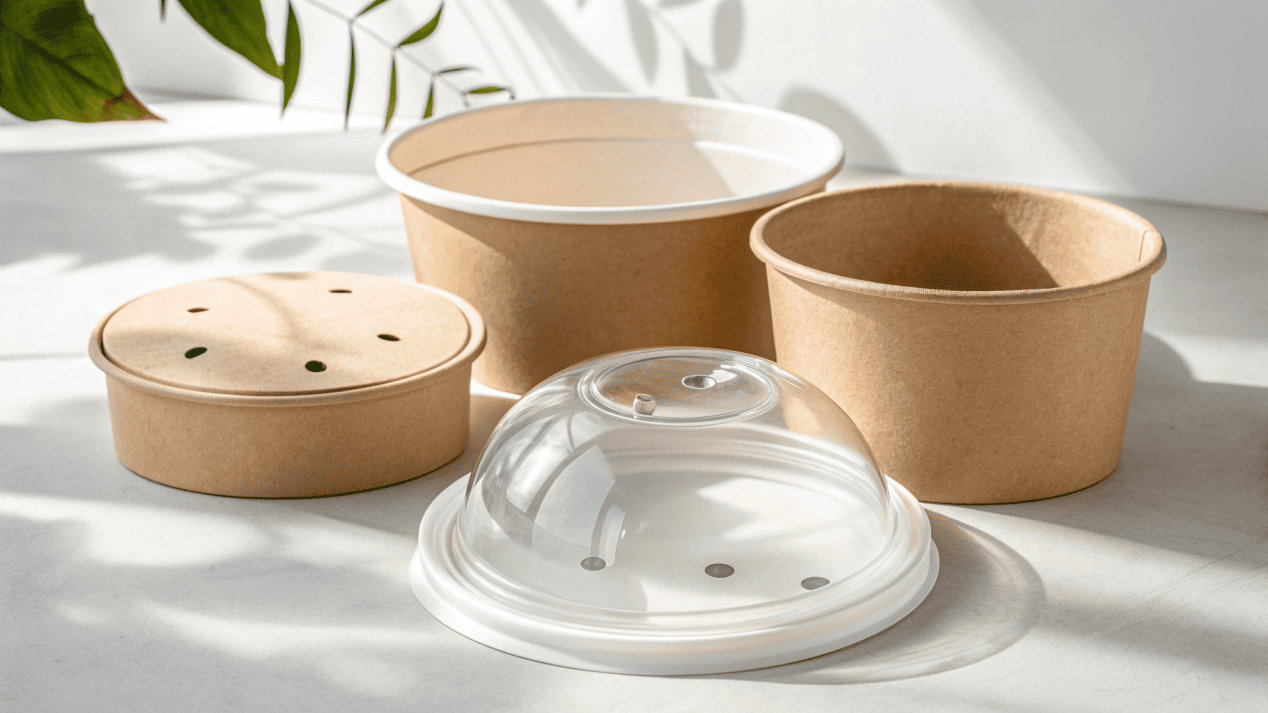
I recall a café client who switched from flat lids to vented lids for soup takeout—the complaints about lids popping off stopped immediately. Matching design to purpose makes the customer experience smooth.
Lid Type Reference
| Type | Use Case | Key Feature |
|---|---|---|
| Vented Lids | Hot soups, noodles, porridge | Steam vents prevent pressure build-up and leaks. |
| Sip-Through Lids | Coffee, tea, hot drinks | Drinking opening, often with spill-prevention plug. |
| Dome Lids | Desserts, drinks with toppings | Extra height space and sometimes straw slots. |
| Flat Lids | Salads, grain bowls, cold pasta | Low profile, secure seal, easy stacking. |
Choosing the right lid design avoids spillages and fits your product presentation.
How Can Lids Support Branding?
Even lids can carry your brand identity and elevate appearance.
Plastic lids allow logo embossing; paper lids can be printed or embossed for a premium feel that reinforces your brand.
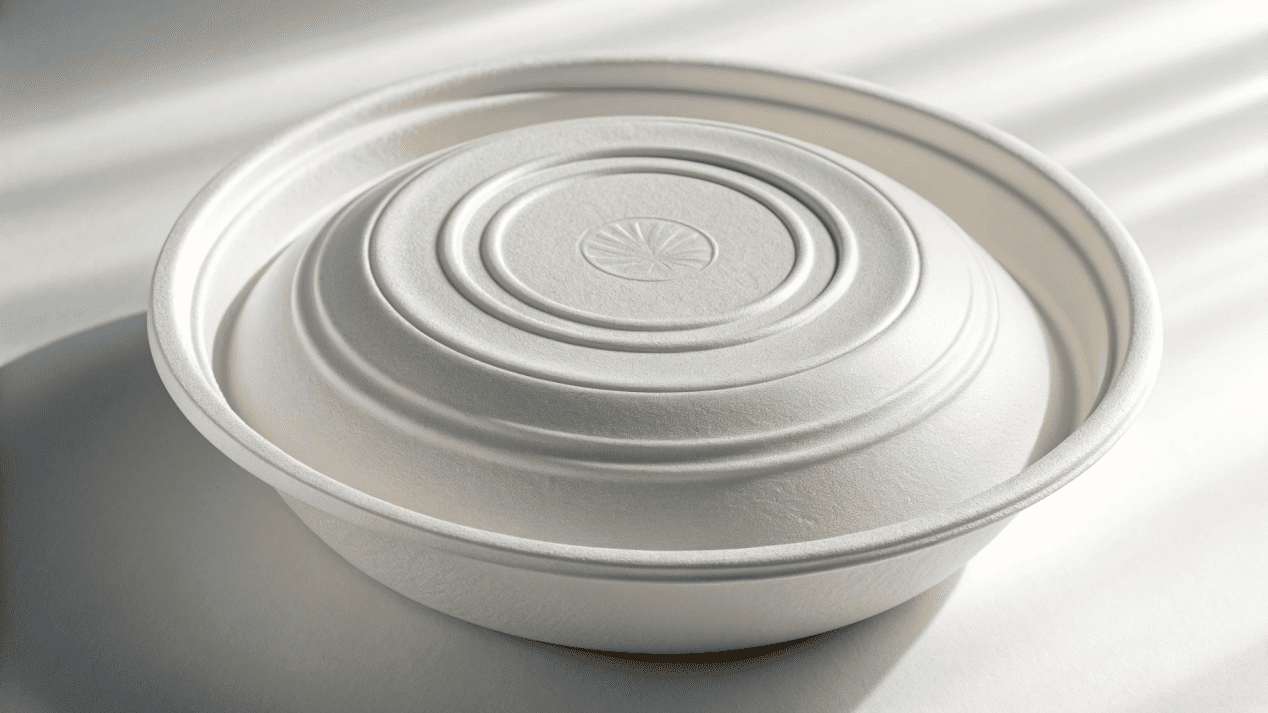
Embossing a logo on a PP or paper lid is a subtle branding move that customers notice. One ice cream client told me their embossed lid became a photo feature for social media—free promotion.
Branding Options for Lids
| Lid Material | Branding Methods |
|---|---|
| PP/CPLA | Embossed logo for tactile effect. |
| Paper Lid | Full-color print or embossing. |
| PET | Limited branding—often via label or sticker. |
Lid branding works best when it complements the bowl design rather than competes with it.
Why Is Fit the Most Critical Feature?
No matter the material or design, a lid must fit its container perfectly to work.
Manufacturing lids and bowls together ensures a precise, leak-resistant fit—reducing risk of mismatch and customer complaints.
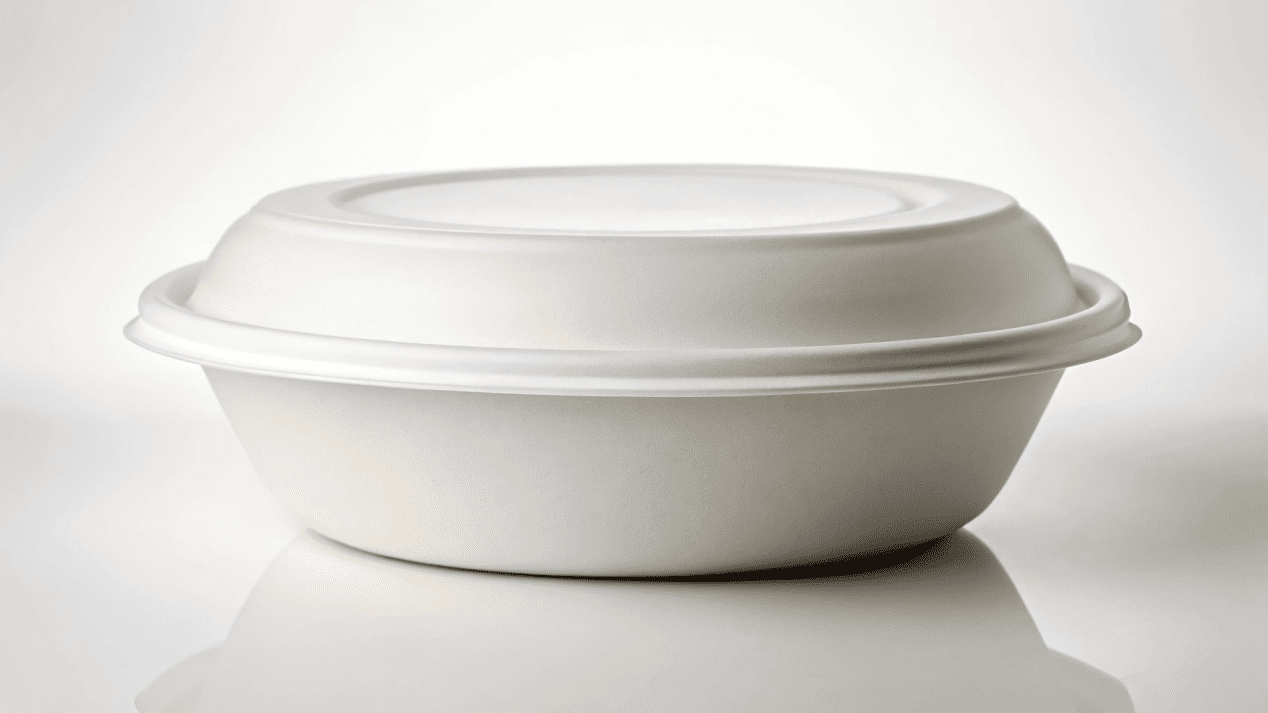
Because we make both bowls and lids in-house, our products are engineered to match exactly. I’ve seen brands struggle when buying lids from separate suppliers—tiny size mismatches cause leaks. Integrated manufacturing removes that risk.
Conclusion
Pick lid materials and designs for your product’s specific needs, add branding where possible, and ensure a perfect fit—this turns packaging into a seamless part of your customer’s experience.
